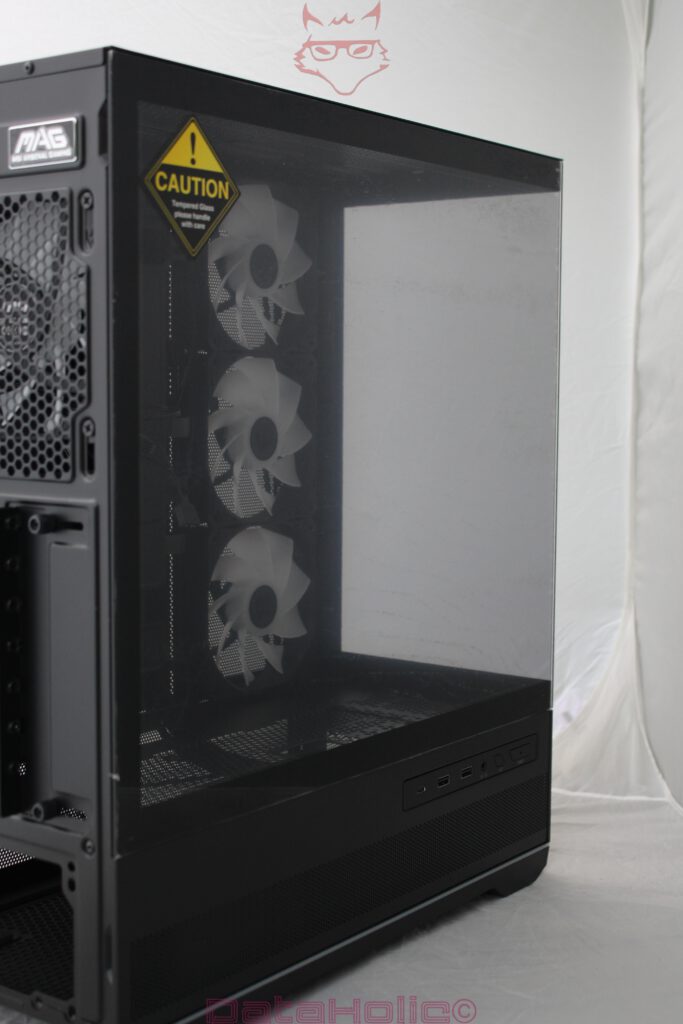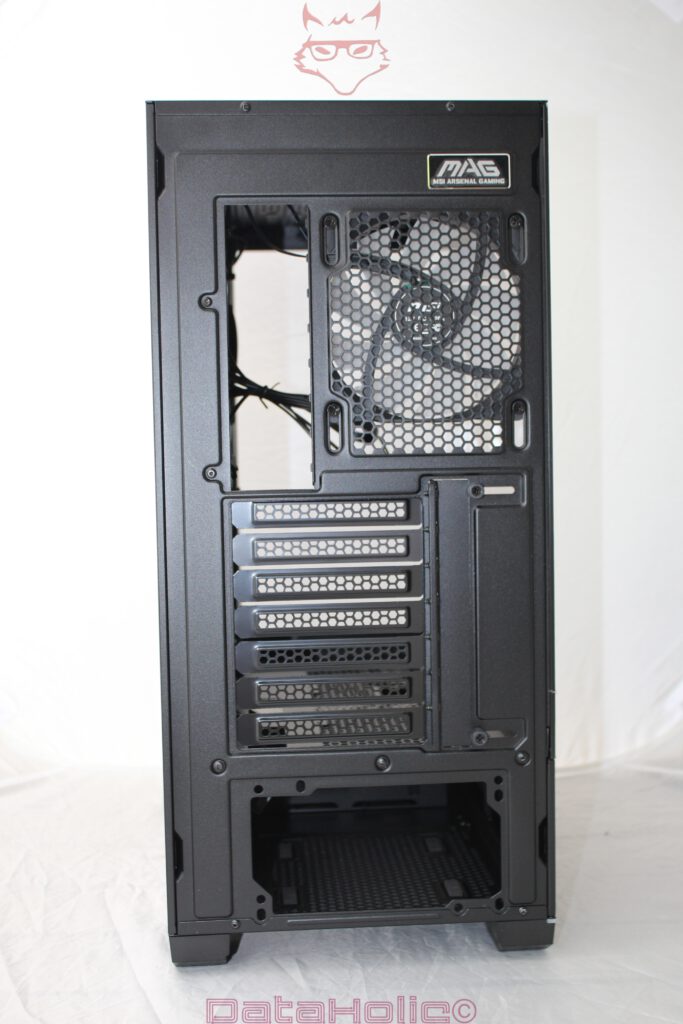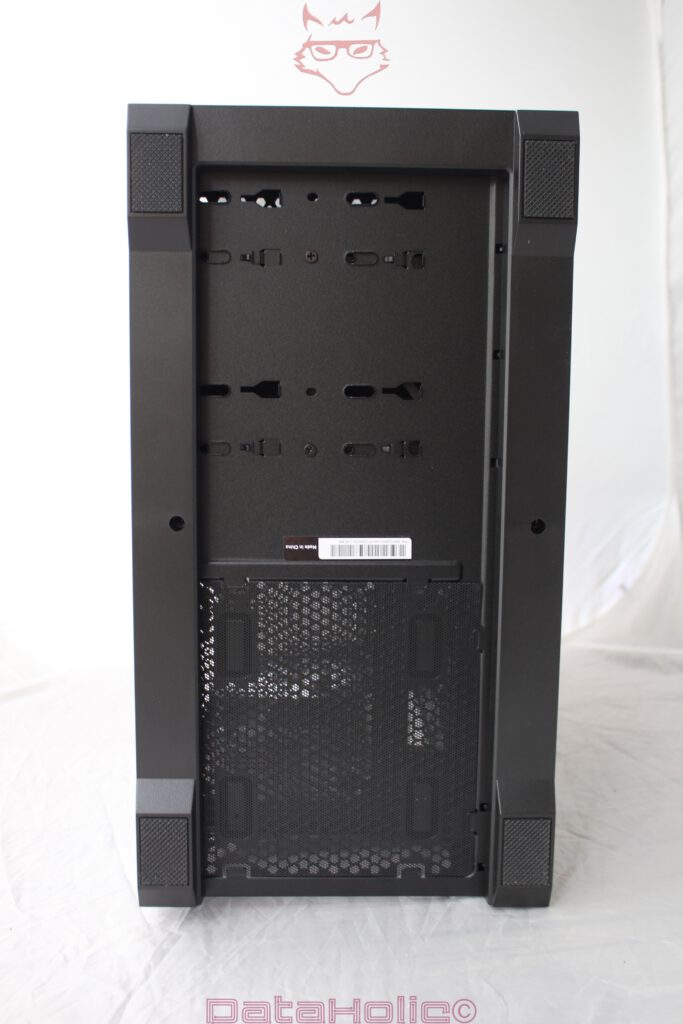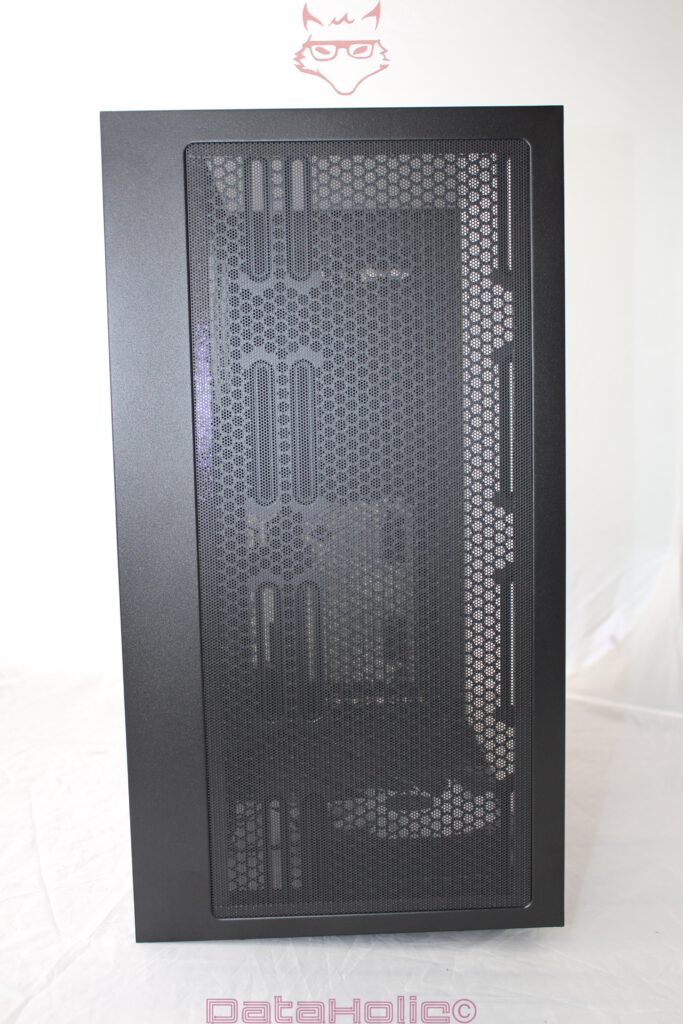Unboxing: MSI MAG Pano 110R PZ – the Grand Unveiling
- Prologue: Why Unboxing Is More Than Opening a Box
- Delivery & First Impression: The Weighty Promise
- Layers of Protection: The Road to the Core
- Contents & Accessories: What’s Inside?
- The First Walkaround: Exterior That Anchors
- Removing the Side Panels: Handling Matters
- Interior Layout: First Look Into the Workshop
- Pre-Installed Fans: Four Times 120 mm, Calm and Consistent
- Accessories Up Close: Small Things, Big Difference
- Touch & Scent: The Sensory Side of Unboxing
- Optics: Function Meets Showcase
- Setup Readiness: What the Unboxing Reveals
- Unboxing Anecdotes: Little Things That Stick
- Design Philosophy in the Box: MSI’s Message
- Build Quality at First Touch: Fit, Finish, Feel
- Ergonomics in Position: Where the Case Belongs
- Packaging as a Quality Signal: Practical & Sustainable
- What the Photos Tell: A Mental Walkthrough
- Notes & Voices: Words From the Field
- Unboxing as Planning: The Organizational Value
- Contextual Thoughts – Without Competition, With Clarity
- Post-Unboxing Checklist: Is Everything Present?
- The Quiet Impression: A Case With Work Ethic
Prologue: Why Unboxing Is More Than Opening a Box
Unboxing has long ceased to be a banal gesture; it has become a ritual. Just as one recognizes a new book first by the scent of fresh print, unboxing hardware reveals much about a manufacturer’s philosophy. “The details are not the details, they make the design.” The line is attributed to Charles Eames – and with the MSI MAG Pano 110R PZ we can observe whether this philosophy is carried right into the cardboard.
Before screws are turned, cables routed, or benchmarks launched, the very first contact decides whether a product stands tall or drowns in the crowd. This text is devoted solely to this first act: the unboxing – meticulously, without drifting into testing or software, and with a keen eye for the small but telling signs.
Delivery & First Impression: The Weighty Promise
The delivery man sets the package down with a knowing nod: imposing dimensions, the signature of heavy-duty hardware. The brown, sturdy shipping carton features a graphic sketch of the case. No garish colors, no over-the-top gloss – the box of the Pano 110R PZ communicates in clean lines: front, side, sharp edges of the frame, fans – all drawn in technical style. At the top left sits the MSI shield with the dragon logo, bottom right the acronym MAG (“MSI Arsenal Gaming”). The product name PANO 110R PZ is bold and clear, yet never screaming.
This restraint feels like workshop culture: “It’s about essentials, no loud fireworks here.” A touch of understatement lingers. This too is a message, fitting for a case that presents itself as a mix of clean surfaces, mesh, and glass. The box feels solid, not overly flamboyant, and above all: trustworthy in transit.

Layers of Protection: The Road to the Core
Opening is classic: a utility knife along the taped seams. The flaps open to reveal thick plastic wrapping and foam padding. Two solid Styrofoam braces clasp top and bottom of the chassis. They fit snugly, without pressing against the glass – crucial, since tempered glass does not forgive pressure points.
Between the case and padding lies a textile-like protective sleeve, thin but tear-resistant, shielding against scratches during the journey. MSI doesn’t stop there: the glass panels themselves are covered with additional protective film – a milky veil with peel-off tabs. It’s a small but important detail: removal without residue, without frustration.
The accessory kit is packed separately and can be removed without taking the case out first – convenient, should one want to inventory screws ahead of time. The carton interior is tidy and deliberate, as if someone rehearsed the builder’s routine.
Contents & Accessories: What’s Inside?
Alongside the case itself, the box contains the following, neatly sorted in zip bags:
- Multilingual quick-start guide plus MSI “Shout-Out” flyer. Straightforward instructions with clear sketches and a product registration prompt.
- Cable ties (standard plastic and one reusable Velcro strap): Enough to get started. The gray MSI-branded Velcro strap is a small but telling gesture – attention to detail often signals broader care.
- Screw set: Divided by purpose (motherboard standoffs, 2.5”/3.5” drives, PSU, extras). Each bag is labeled. Nothing frustrates more than a mixed “everything bag”; the separation here feels thoughtful.
- Plastic clips/brackets: Modest-looking, but invaluable later for cable channels or support brackets – the unseen heroes of tidy builds.
The message is clear: MSI delivers essentials, not circus acts. No flashy surplus, but everything required to build confidently right away.

The First Walkaround: Exterior That Anchors
Left: Tempered-Glass Showcase
The left side panel is the main stage: a large tempered-glass window, lightly tinted so hardware inside glows with subtlety rather than glare. In the corner, the familiar yellow “Caution – Tempered Glass” label, a ritual for PC builders. Behind the pane sit three pre-installed 120 mm fans, white blades in black frames. The lineup looks serene, almost Scandinavian, hinting at even ARGB diffusion later on.
The upper edge closes flush with the frame; gaps are even, consistent. “Quality shows in the things you don’t notice,” goes the saying. Here you notice it precisely as the absence of flaws.


Front: Mesh Instead of Mirror – A Statement
Though the name “Pano” evokes panoramas of glass, MSI chooses a mesh front panel. Finely perforated, spanning the entire face, with clear air intake channels. Behind it, the outlines of the three front fans shimmer through. The mesh decision is pragmatic: airflow reigns supreme, and filters are mandatory. It also avoids fragile, smudge-prone glass, trading spectacle for daily usability.

I/O Panel: Accessible Frontline
At the bottom right front – integrated into the PSU shroud – sits the I/O panel. Horizontal, it offers:
- USB-C (Type-C)
- Two USB-A (Type-A)
- Combo audio jack (headset/mic)
- LED switch (for lighting modes)
- Power button (with status LED)
The placement is deliberate: not on top (dust trap), not at the bottom (awkward reach), but forward right, accessible even if the case sits under a desk. The buttons click firmly, not mushy. Markings are engraved, not just printed – tactile guidance in darkness.

Rear: Classic Structure With a Twist
The back follows convention but with finesse: a 120 mm exhaust fan slot (pre-fitted) above the motherboard I/O cutout. Beneath are eight horizontal expansion slots, vented covers included. Next to them, a tall sealed panel hints at vertical GPU mounting (with riser cable, not included).
Bottom left: the PSU bay, with small inner pads to prevent metal-on-metal contact. Screw holes are cleanly cut, coating is matte and fingerprint-resistant.

Base & Feet: The Everyday Contact
Turning the case carefully, the bottom reveals a full-length removable dust filter. It slides out the front – no need to flip the case over to clean it. A daily lifesaver.
The feet are wide, angled, padded with rubber. Their height ensures airflow clearance, so carpet doesn’t choke intake. The base is a functional part, clearly organized, free of gimmicks.

Top: Fully Ventilated
The roof carries a wide honeycomb perforation, spanning nearly the entire panel. The pattern resembles woven hexagons, attractive and technical. Later, radiators or fans can mount here. For now, the takeaway: the top is ready.

Removing the Side Panels: Handling Matters
Glass is secured with magnetic snap-in system. They stay in place when loosened – no vanishing hardware on the floor. The pane lifts smoothly, without flexing. Fit tolerances feel precise.
The right steel panel removes just as easily. It is reinforced, not flimsy. In hand it feels solid, with a dull, weighty tone when tapped – no tinny rattle.
Interior Layout: First Look Into the Workshop
With glass removed, the interior reveals a front column of three 120 mm fans. At the rear, the exhaust fan balances airflow. The motherboard tray is riddled with cable pass-throughs, some rounded, some elongated. No rubber grommet overkill, just smooth, deburred steel. In the center: a large CPU cutout, ensuring cooler backplates fit without motherboard removal.
The lower section is divided by a PSU shroud, perforated for airflow. The perforation mirrors the roof’s honeycomb – a subtle design continuity. The I/O panel integrates neatly at the front right, firmly fastened.
Behind the tray lies generous cable space, with pre-mounted Velcro straps and visible channels. The whole interior feels orderly and welcoming – a workshop that invites building.
Pre-Installed Fans: Four Times 120 mm, Calm and Consistent
The four fans (three front, one rear) share a uniform design: white blades, black frames. Their symmetry creates a sense of calm, promising diffused illumination under ARGB. Mounting holes are accessible from inside, facilitating radiator or fan swaps.
Cables are neatly routed and tied, no stray wires. Pre-installed fans are always a balancing act between budget and quality, but here the impression is of coherence: same look, same size, same orientation.
Accessories Up Close: Small Things, Big Difference
Inspection of the screw sets shows: clean threading, no burrs. Standoffs are standard hex – no exotic profiles. A standoff tool isn’t included, but veterans have one; newcomers can manage with pliers.
The cable ties are long enough; the MSI Velcro strap carries a muted logo. Subtle branding, not heavy-handed. Among the zip bags, small plastic angles are easy to miss – later invaluable for guiding cable runs.
“Order is the beauty of reason,” a philosopher once said. Inside the case, order is also the foundation of serviceability – and it begins with the right accessories.
Touch & Scent: The Sensory Side of Unboxing
Yes, it’s a tech product. Yet first contact always has a sensory component. The smell of fresh-coated steel – neutral, not chemical. The cool heft of glass. The whisper of protective film peeling off. These fleeting sensations say: “New. Solid. Ready.”
Thumbscrews turn smoothly, without grit. Panels slide without scraping. Edges are deburred; fingertips glide freely. These quiet confirmations of quality matter.
Optics: Function Meets Showcase
The Pano positions itself – its name hints at it – as a stage for hardware. The glass is broad enough to spotlight an entire build, without becoming a mirror wall. The mesh front is the organ of breath, not a display.
Builders using white or neutral color schemes will enjoy the milky fan blades glowing softly. Dark builds gain contrast; RGB-heavy systems benefit from even diffusion. The I/O at the lower front frames it pragmatically, like a control station.
Setup Readiness: What the Unboxing Reveals
Even without assembly, much is clear:
- Radiator/fan mounts: Front rails and top perforation indicate easy flexibility.
- Cable management: Pre-installed Velcro straps, many pass-throughs, ample clearance – promises clean builds without struggle.
- Dust control: Pull-out bottom filter, mesh front, perforated shroud – triple defense.
- GPU orientation: Rear vertical mount option signals futureproof flexibility.
- Quality feel: Tight seams, clean finishes, precise threading, solid panel fit – early signs of consistency.
The unboxing already tells the story of a case designed for practical showcase builds.
Unboxing Anecdotes: Little Things That Stick
- Front fans behind mesh: Through the perforation, the pattern resembles fish scales hiding white fins – oddly poetic.
- Peeling the glass film: The edge curls off with a silver shimmer, that deeply satisfying builder’s moment.
- The Velcro strap: A simple textile piece, but firm and reliable – not the fray-prone type.
These are the ephemeral joys that make unboxing texts worthwhile: capturing the fleeting delight of newness.
Design Philosophy in the Box: MSI’s Message
From sketched carton, tidy accessory packs, ample breathing room, and the duality of glass and mesh, a clear message emerges. MSI does not aim to create a diva case that gathers dust in awe. Instead: tool and stage in one.
No explosive fonts on the box. No plastic presentation trays inside. Just functional padding, organized bags, clean factory setup. The language is that of a company that listens to builders.
“Form follows function” finds a modern revision here: “Form and function ride together.” Mesh brings air, glass brings theater, shroud brings order, I/O brings ergonomics.
Build Quality at First Touch: Fit, Finish, Feel
- Coating: Matte, fine-textured, resistant to fingerprints and glare.
- Edges: Deburred throughout, safe to touch, no surprises.
- Fits: Glass sits without tension, steel panel without rattle, roof without flex.
- Threads: Evenly coated, screws turn smoothly.
These are the currencies of unboxing. They don’t predict long-term endurance but indicate serious workmanship.
Ergonomics in Position: Where the Case Belongs
Set instinctively to the left of a desk, glass facing right, the I/O panel sits forward-right, perfectly reachable. Place it right of the desk? Still accessible, since it isn’t on the roof.
The feet grant stability on uneven surfaces. The bottom filter slides out frontward. In setup position, one notices: nothing obstructs, nothing nags.
Packaging as a Quality Signal: Practical & Sustainable
The Pano’s packaging is functional and recyclable. Brown cardboard, minimal plastics, just protective sleeves and bags. No excessive glossy plastics or blister packs.
Yet protection is strong: form-fitting braces and multiple shield layers. Anyone who’s received shattered glass knows: this is deliberate foresight.
What the Photos Tell: A Mental Walkthrough
- Carton front: Technical drawing – a nod to precision.
- Accessory kit: Ties, screws, clips, Velcro – a complete mini-toolkit.
- Left side: Glass reveals fan vertical, foreshadowing later light design.
- Rear: Many slots, extra panel – flexibility in GPU mounting.
- Front I/O close-up: USB-C, USB-A, audio, LED, power – essentials neatly framed.
- Glass edge detail: Clean cut, perfect fit.
- Interior view: Open, clear, inviting – a canvas for builds.
- Bottom filter: Rails, easy grip – cleaning made trivial.
- Top panel: Honeycomb pattern, both technical and aesthetic.
Notes & Voices: Words From the Field
- A seasoned modder once said: “A good case disappears – you think about the build, not the case.” That vibe resonates here.
- An old editor quipped: “If the protective film peels nicely, someone in the factory cared.” Builders know: it matters.
- In the notebook margin: “The roof perforations look like a starfield you want to spin in your fingers.” Ten percent poetry is allowed.
Unboxing as Planning: The Organizational Value
Unboxing is not just spectacle; it’s planning. Which fans stay, which go? Where will the radiator mount? How do cables route? Sorting screws and laying out clips starts the mental blueprint.
The Pano 110R PZ supports this by avoiding distractions. No mislabeled bags, no awkward filters, no stubborn films. This absence of friction is its quiet discipline.
Contextual Thoughts – Without Competition, With Clarity
Some cases go for showmanship unboxing: magnetic flaps, layered trays, welcome letters. The Pano takes a workmanlike route: sturdy braces, tidy bags, practical films. The carton says: “Let’s build.”
It doesn’t dazzle; it reassures. And for a case, reassurance is often the greater luxury.
Post-Unboxing Checklist: Is Everything Present?
Before recycling the carton:
- Case intact (no cracks, dents, paint flaws)
- Four pre-installed fans intact and spinning freely
- Accessory packs complete (screws, standoffs, ties, Velcro, clips)
- Quick-start guide and flyer present
- Dust filter easily removable
- I/O panel solid, buttons responsive
Checkmarks all around – carton flattened, films removed, case ready.
The Quiet Impression: A Case With Work Ethic
Once the table is clear, the lingering impression is of focused solidity. The Pano 110R PZ is no diva, no sculpture; it is a builder’s tool – and a stage for systems to shine later.
Mesh breathes, glass reveals, the base defends against dust, the rear invites expansion, the I/O sits where it belongs. Small decisions, large effect.
“Reliability is the courtesy of technology,” one might say. The Pano bows politely at unboxing: courteous, unpretentious, functional.
Transparency Note (EU Regulations):
The MSI MAG Pano 110R PZ featured in this review was provided to us by MSI as a non-binding loan for testing purposes. This is not paid advertising.
MSI had no influence on the content, evaluation, or editorial independence of this article. All opinions are based solely on our own hands-on experience.
We sincerely thank MSI for providing the case and for their trust in dataholic.de.
